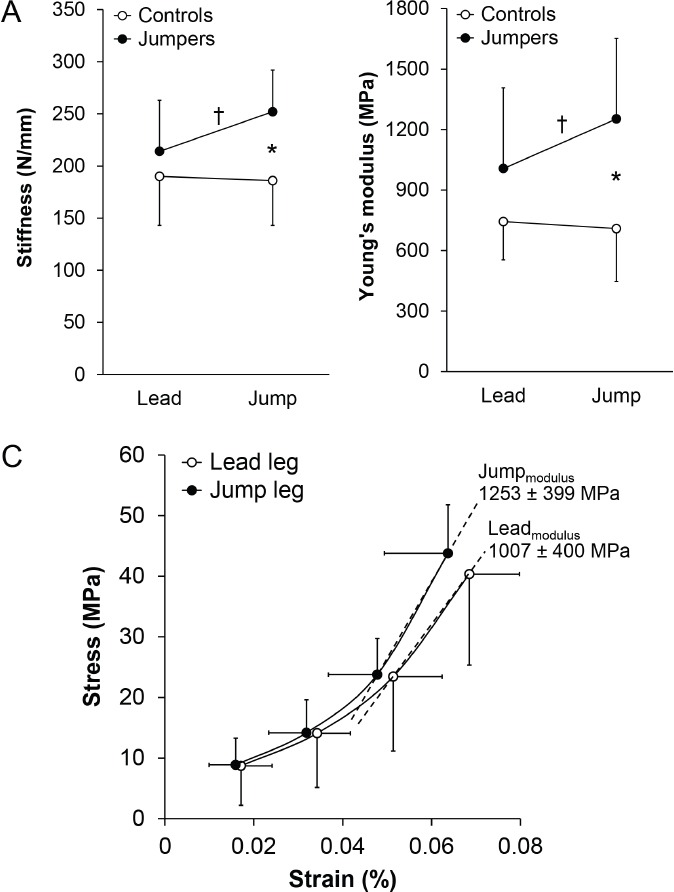Figure 3.

Achilles tendon. A) stiffness and B) Young’s modulus in the preferred (jump) and non-preferred (lead) jumping legs in jumpers and controls. There were significant activity X leg interactions on both stiffness and Young’s modulus, as determined by two-way, one-repeated measure ANOVA. Jumpers had greater Achilles tendon stiffness and Young’s modulus in their jump leg compared to their lead leg (†p<0.05, paired t-test), and compared to the jump leg in controls (*p<0.05, unpaired t-test). There were no jump vs. lead leg differences in Achilles tendon stiffness or Young’s modulus within controls, or between lead legs in jumpers and controls. Data represent mean ± SD. C) Mean (± SD) stress and strain at 25%, 50%, 75% and 100% of maximal voluntary contraction in the jump and lead legs of jumpers, and mean (± SD) Young’s modulus. Young’s modulus was calculated from the linear slope between the 75% and 100% points of an exponential curve fit to the data of each individual tendon.
